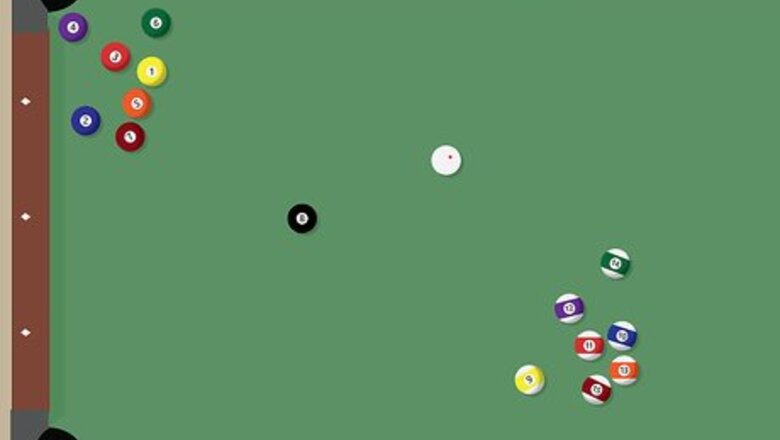
views
Setting Up the Game
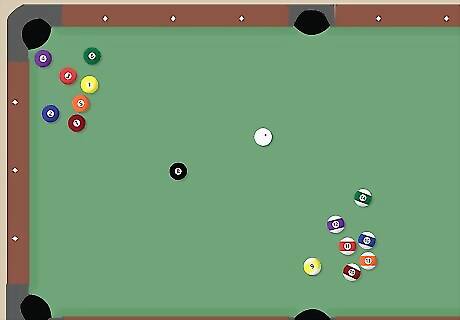
Understand the basics. 8-ball is a game played with a cue ball and 15 "object balls," numbered 1 through 15. One player must pocket balls of the group numbered 1 through 7 (solid colors), while the other player has 9 through 15 (stripes). To win, you must be the player to pocket either group first, and then legally pocket the 8-ball.
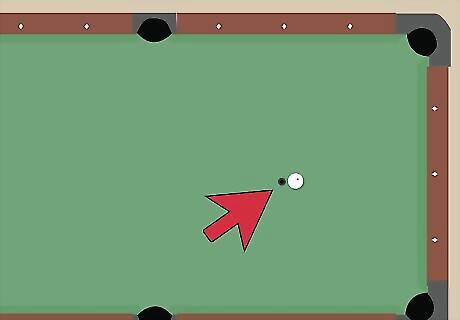
Find the head spot. Look for a small dot or triangle in the lateral center of the felt, about a quarter of the way down the length of the table. This is where you will place the cue ball to begin the game. The line that runs through this point is called the "head string."
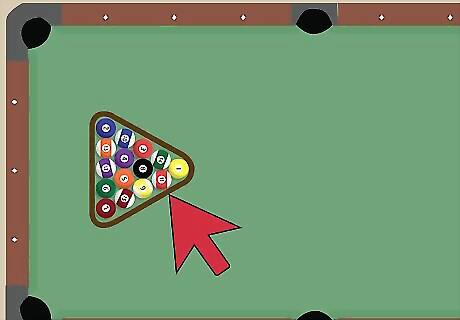
Rack the balls. Find the triangular pool rack and place the 1-15 balls inside. Arrange the rack at the opposite end of the table from the head spot, with one corner of the triangle facing the break. Make sure that the rack is laterally centered along the foot string. Then, when you are ready to play, remove the racking frame so that only the balls remain. Place the point of the triangle three-quarters down the length of the table, at the "foot spot": the dot on the tabletop that corresponds to the head spot. If the "head string" marks the 1/4 point from the head of the table to the foot, then the "foot string" is an imaginary line that marks the distance 3/4 of the way from the head to the foot. The "food spot" is located at the exact midpoint of the foot string line. Set the 8-ball in the center of the triangle. Put the 1-ball at the point of the triangle, facing the break. Place a stripe ball in one back corner of the rack, and a solid ball in the other corner.
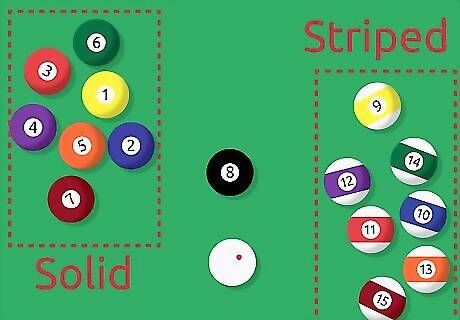
Learn the lingo. Pool is rich with unique terminology that can be difficult for new players to understand. Reference the terms as you learn to play. If you aren't sure what something means, ask a veteran pool player to clarify. Object balls: The striped and solid balls numbered 1-15. Every pool ball but the cue ball. The "object balls" are the balls that you are trying to knock into the pockets. Pocket: The baskets along the rim of the pool table. There are six pockets: one in each corner, and one at the midpoint of each long side. "Pocketing" is the act of knocking one or more numbered "object" balls into a pocket. Rail: The bank along the side of the pool tabletop. Scratch: When a player accidentally knocks the cue ball into a pocket. If you scratch, remove one of your sunk balls from a pocket and place it back in the center of the table. Your opponent now has the chance to shoot from his or her chosen spot at the top of the table. Open table: The table is "open" when the choice of groups (stripes or solids) has not yet been determined. When the table is open, it is legal to hit a solid first in order to make a stripe or solid. Foul penalty: Opposing player gets the cue ball in hand. This means that the player can place the cue ball anywhere on the table to take his or her next shot.
Beginning the Game
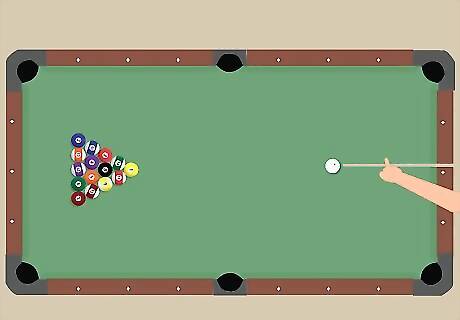
Break the rack. One player lines up the cue ball behind the head string and aims at the rack. Knock the cue ball into the triangle of balls with force and precision. To execute a legal break shot, the breaker must either pocket a ball, or drive at least four numbered balls to the rail. When the breaker fails to execute a proper break, it is a foul.
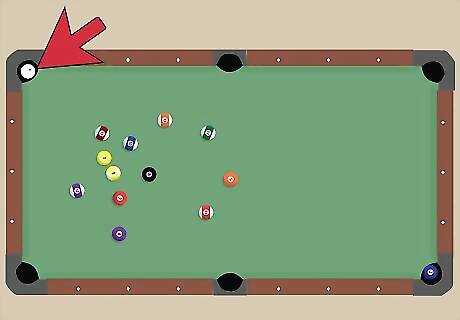
Know what to do in case of a scratch or foul. If the breaking player scratches on his or her shot, then the game has only partially begun. In the case of a foul, the incoming player has two options: accept the table as is and take the next shot, or re-rack the balls for a redo of the opening break. The incoming player gets to choose whether to personally break or to allow the original breaker to try again. If a player scratches on a legal break shot: All balls pocketed remain pocketed. The shot is a foul, meaning that it is now the other player's turn to shoot. The table is open, meaning that the first player to sink a ball without scratching chooses that ball type (stripes or solids) as his or her objective for the game. If a player jumps a numbered ball off the table on the break shot, it is a foul. The incoming player has two options: Accept the table in position. Take the next shot and continue the game. Take the cue ball in hand behind the head string. Shoot or break again, as necessary. If the 8-ball is pocketed on the break, then the breaker may ask for a re-rack, or have the 8-ball spotted and continue shooting. If the breaker scratches while pocketing the 8-ball on the break, the incoming player has the option of a re-rack or having the 8-ball spotted and begin shooting with ball in hand behind the head string.
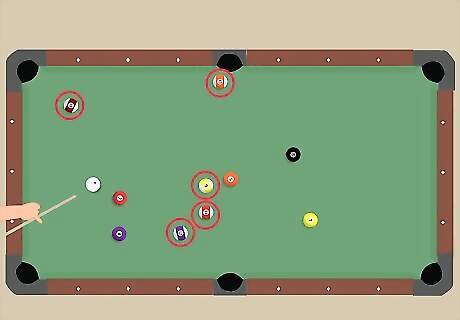
Choose groups. Before groups are chosen, the table is "open." The first player to sink a numbered ball effectively chooses to aim for that group of balls throughout the rest of the game. If you are the breaking player, for instance, and you sink the striped 13-ball, then you are "stripes." Look around for other striped balls that are easy to strike. Your goal is to pocket all of the striped balls (and then the 8-ball) before your opponent pockets all of the solid balls and the 8-ball. Make it clear who is who. If you make a stripe, call out, "I'm stripes!" If you make a solid, call out, "I'm solids!" If you are the first player to pocket a numbered ball, but you sink both a stripe and a solid at the same time: you have your pick between the two groups. Choose the group that looks the most immediately advantageous.
Playing the Game
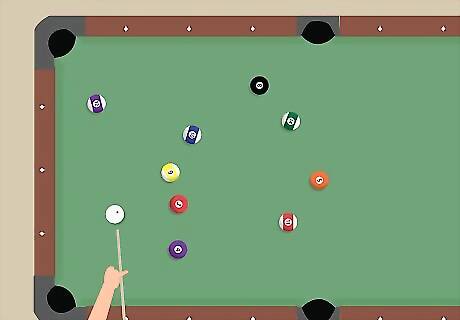
Keep shooting until you fail to pocket a ball. If you are shooting on "stripes," and you make the striped 12 ball, then it is still your turn. Try to pocket another striped ball. If you successfully pocket another striped ball on your next shot, then you can shoot again. As soon as you scratch or miss the pocket, however, it immediately becomes your opponent's turn. There is no rule against combination shots, in which you sink two numbered balls from your group with one shot. However, the 8-ball can not be used as a first ball in the combination unless it is the shooter’s only remaining legal object ball on the table. Otherwise, it is a foul.
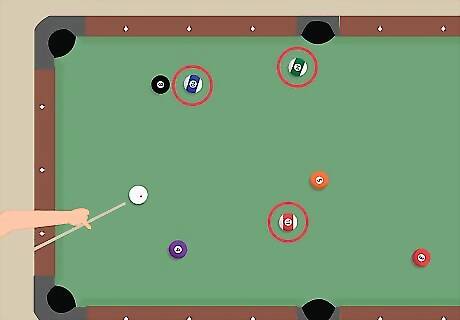
Pocket all of the balls in your group. If you are shooting "solids," then try to make all of the balls numbered 1-7 so that you can pocket the 8-ball. If you are shooting "stripes," then make all of the balls numbered 9-15. If you make your opponent's ball, then your turn ends in a scratch.
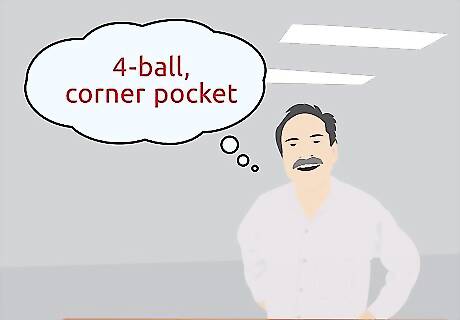
Call your shots. In many official pool games, players must call each shot they take in order for that shot to be legal. This means: before each shot, announce which ball you are going to knock into which pocket. You might say, "4-ball, corner pocket," and indicate with your pool cue to make it clear which pocket you mean. If you are playing a casual game of pool with friends, then there is no need to call your shots.
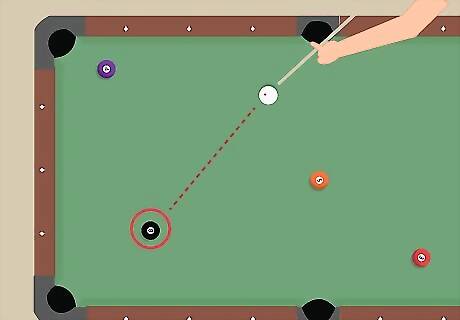
Pocket the 8-ball. You can only legally shoot at the 8-ball once you have made all of the other numbered balls in your group (stripes or solids). Make sure to call your pocket! Look over the table and decide which pocket will be the easiest place to sink the 8-ball. Then, announce where you are going to pocket the 8-ball before you shoot. If you are the first to legally pocket the 8-ball, then you win the game! For instance: say, "8-ball, corner pocket," and indicate which corner pocket you mean. If you call your shot, but you do not make the 8-ball into a pocket: it is now your opponent's turn to shoot. You have neither won nor lost unless you make the 8-ball or scratch while trying to make the 8-ball.
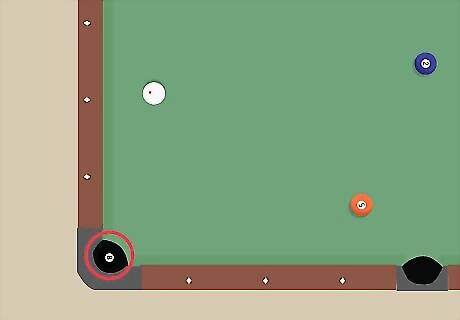
Finish the game. A game of 8-ball pool ends when a player legally sinks the 8-ball after pocketing all of the numbered balls in his or her group. However, a player can also lose the game by committing certain infractions. A player loses when he or she: pockets the 8-ball at any point after the break; pockets the 8-ball on the same stroke as the last of his/her group of balls; jumps the 8-ball off the table at any time after the break; pockets the 8-ball in a pocket other than the one he/she has called; or pockets the 8-ball when it is not the legal "object ball."












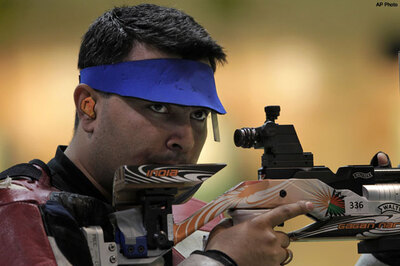





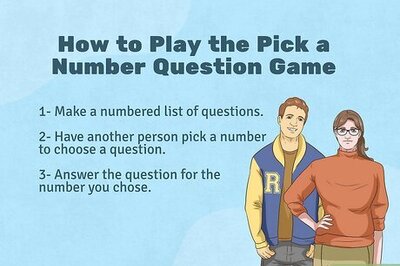

Comments
0 comment